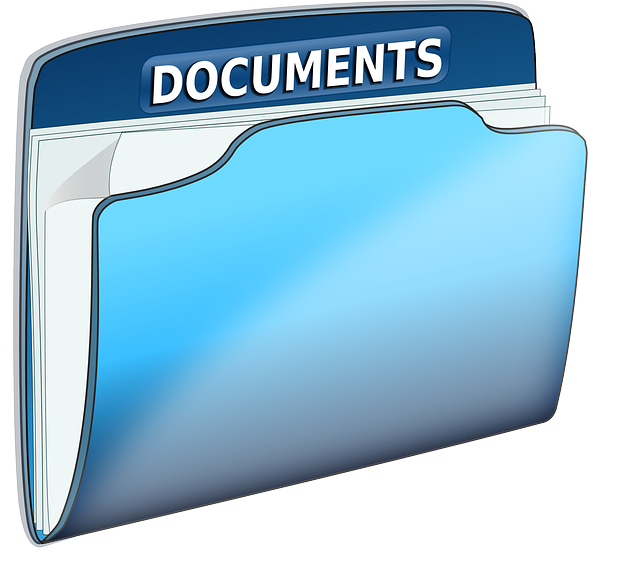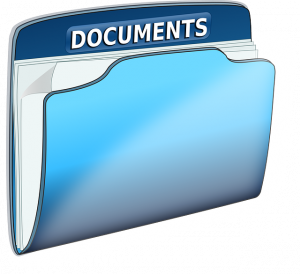
Help! I Accidentally Added the Same Customer Twice in QuickBooks
 If you accidentally added to the same customer twice in QuickBooks, don’t panic. You can always delete one of the customer profiles, or you can merge both of them together. QuickBooks makes it easy to deal with duplicate customer profiles. Rather than allowing duplicate customer profiles to throw off your business’s financial records, you can use one of these solutions.
If you accidentally added to the same customer twice in QuickBooks, don’t panic. You can always delete one of the customer profiles, or you can merge both of them together. QuickBooks makes it easy to deal with duplicate customer profiles. Rather than allowing duplicate customer profiles to throw off your business’s financial records, you can use one of these solutions.
How to Delete a Duplicate Customer Profile
Deleting a duplicate customer profile will prevent it from appearing on lists and menus. If you have two profiles for the same customer, you can delete one of them.
You can delete a duplicate customer profile in QuickBooks Online by accessing “Sales,” followed by “Customers.” Select the name of the customer whom you wish to delete. Clicking “Edit” will then bring up several new options, including the “Make inactive” option. Choosing the “Make inactive” option will essentially delete the customer profile. The customer’s transactions will remain on all associated reports, but you won’t find the customer on lists and menus.
How to Merge Two Customer Profiles
You can also merge two customer profiles together. Merging, of course, combines the data of the respective customer profiles. All of the customers’ transactions — as well as their other data — will be combined into a single customer profile.
To merge two customer profiles together, access “Sales” and choose “Customers.” Next, find and select the customer profile that you want to delete. When merging two customer profiles together, you’ll delete one of the customer profiles and keep the other. You should choose the customer profile that you want to delete during this step.
Clicking the “Edit” link will bring up new options. You should see a “Display name as” field. In this field, enter the customer profile that you want to keep. Clicking the “Save” link will then initialize the merging process. The two customer profiles will be merged together. Instead of having two customer profiles for the same customer, you’ll have a single customer profile. This merged profile will contain the data of both customers.
Keep in mind that you can’t merge customer profiles if either of them has any sub-customers. If you discover sub-customers on one of the customer profiles, you’ll need to convert the sub-customers into regular customers. After converting them into regular customers, you can then go back and merge the two customer profiles together.
Did this tutorial work for you? Let us know in the comments section below!

The Benefits of Using the Audit Log in QuickBooks
 The audit log is an invaluable feature of QuickBooks Online. Available under the “Settings” menu, it allows you to view and audit changes made to your account. You can always pull up your chart of accounts to view financial data. The audit log, however, reveals other types of data that aren’t found on the chart of accounts.
The audit log is an invaluable feature of QuickBooks Online. Available under the “Settings” menu, it allows you to view and audit changes made to your account. You can always pull up your chart of accounts to view financial data. The audit log, however, reveals other types of data that aren’t found on the chart of accounts.
Find Deleted Transactions
You can use the audit log to find deleted transactions. There are instances in which you may need to delete a transaction. If a transaction was voided or otherwise not fulfilled, for instance, you may want to delete it. Deleting the wrong transaction, though, could prove disastrous to your books. With the audit log, you can easily find deleted transactions.
Track User Sign-Ins
You can track user sign-ins with the audit log. Not all QuickBooks Online accounts are managed by a single user. Some of them are managed by multiple users. If other users have access to your QuickBooks Online, you may want to track sign-ins with the audit log. Tracking sign-ins will allow you to see when and who signed in to your QuickBooks Online account.
Identify Original Transaction Dates
Want to find the original date on which a transaction occurred? Look no further than the audit log. With the audit log, you can identify original transaction dates. The audit log goes back two full years. As long as a transaction occurred in the past two years, it will appear on the audit log. You can identify the original amount and date of the transaction by pulling up the audit log in QuickBooks Online.
Track Bank Account Changes
You can track changes to your bank accounts in the audit log. Maybe you added a new bank account, or perhaps you removed an existing bank account. The audit log shows bank account changes such as this. Users who make changes to bank account-related information are given the “Online Banking Administration” profile in the audit log.
Find Automatic Changes
The audit log doesn’t just show changes made manually by you or other users; it shows automatic changes. Automatic changes are those that QuickBooks Online makes automatically to your account. If you use a third-party app, for instance, QuickBooks Online may make changes to your account automatically. Regardless, you can find these automatic changes in the audit log. The audit log includes both manual changes and automatic changes.
Have anything else that you’d like to add? Let us know in the comments section below!

How to Invite Your Accountant in QuickBooks
 Do you have an accountant who’s responsible for managing your business’s books? You aren’t alone. Research shows that over half of all business owners have an accountant. Assuming you use QuickBooks to track your business’s finances, you’ll probably want to invite your accountant to your QuickBooks account. By inviting your accountant, he or she will have access to all of your QuickBooks-stored accounting data.
Do you have an accountant who’s responsible for managing your business’s books? You aren’t alone. Research shows that over half of all business owners have an accountant. Assuming you use QuickBooks to track your business’s finances, you’ll probably want to invite your accountant to your QuickBooks account. By inviting your accountant, he or she will have access to all of your QuickBooks-stored accounting data.
Step #1) Sign In to QuickBooks Online
To begin, you’ll need to sign in to your QuickBooks Online account. QuickBooks Online is the cloud version of Intuit’s popular accounting software. You can use it with any major web browser. You’ll need to sign in to your QuickBooks Online account so that you can send an invite to your accountant.
Step #2) Add Your Accountant
After signing in to your QuickBooks account, you’ll need to add your accountant. Click the gear-shaped icon at the top of the home screen and choose “Manage Users.” You should see an “Accounting Firms” section. Enter the name of your accountant and his or her email address in this section.
Step #3) Send the Invite
Now it’s time to send the invite. In the “Accounting Firms” section is an “Invite” link. Clicking the “Invite” link will send an invite to your accountant. QuickBooks Online will send the invite to the email address that you specified in the previous step. Assuming you entered the right email address, your accountant should receive your invite.
Your accountant will have to create a user ID when signing in to your QuickBooks Online for the first time. The email invite will contain a link, which your accountant can use to sign in to your QuickBooks Online account. Assuming your accountant doesn’t already have a user ID, he or she will have to create one.
Step #4) Check the Status
You can check the status of the invite to see whether your accountant has accepted it yet. The status is available on the “Manage Users” page of QuickBooks Online. After sending your accountant an invite, you should see an “Invited” status on this page until he or she accepts the invite. Once your accountant has accepted the invite, the status on this page will change to “Active.” The “Active” status indicates that your accountant is now a registered user of your QuickBooks Online account.
Did this tutorial work for you? Let us know in the comments section below!

QuickBooks Tags: 5 Things You Need to Know About Tags

QuickBooks Online is loaded with features, one of which is the ability to create tags. You can use tags to track transactions. This optional feature makes it easy to track business-related transactions. Rather than keeping all of your transactions together, you can group and categorize them with tags. There are several things you need to know about tags, however.
#1) Not the Same as Classes
While classes are used for tracking purposes as well, they aren’t the same as tags. Tags are designed specifically for transaction-level tracking, whereas classes are designed for general tracking purposes. You can use classes to track expenses and budgets, for instance. Tags are designed specifically for transaction-level tracking.
#2) Toggle On and Off
You can toggle on and off tags. By default, tags are turned on. To turn them off, click the “Settings” option and choose “Account and Settings.” Net, go to the “Sales” tab. You should see the option to turn off tags in the “Sales form content” area. You can reactivate tags by returning to this area.
#3) Transactions Can Feature Multiple Tags
Contrary to common belief, transactions aren’t limited to a single tag. You can give them multiple tags. According to Intuit, there’s no limit on how many tags a given transaction can have. You can give a transaction a single tag or 100 tags. With that said, groups can only have one tag.
#4) Analytics Are Available
Want to see how your tagged transactions are doing? QuickBooks Online offers analytics for tagged transactions. You can access analytics from the “Bookkeeping” or “Banking” menu, followed by selecting the “Tags” option. QuickBooks Online will reveal a list of all of your groups. After locating the group that you want to analyze, click “Run report” under the “Action” menu. QuickBooks Online will then generate a report for the tagged transactions. You can evaluate this report to gauge the performance of the tagged transactions.
#5) Tags Are Editable
You can edit tags in QuickBooks Online. From the “Settings” menu, choose “Tags.” You can now search through your available tags and tag groups. After finding the tag or tag group that you want to edit, click “Run report.” If it’s a tag, you can then edit it by selecting “Edit tag.” If it’s a tag group, you’ll need to select “Edit group” to edit it. Regardless, tags are editable. You don’t have to delete them and recreate them from scratch. If you want to make a change to a tag or tag group, you can edit it by following these steps.
Have anything else that you’d like to add? Let us know in the comments section below!

Flat View vs Hierarchical View in QuickBooks: What’s the Difference?
 When using QuickBooks Desktop, you may notice an option to switch from flat view to hierarchical view and vice versa. QuickBooks Desktop supports two different view types: flat and hierarchical. You can access them in the Customer Center. Regardless of the view type, your data will remain the same. The view type simply changes the presentation of the data. What’s the difference between the flat and hierarchical view exactly?
When using QuickBooks Desktop, you may notice an option to switch from flat view to hierarchical view and vice versa. QuickBooks Desktop supports two different view types: flat and hierarchical. You can access them in the Customer Center. Regardless of the view type, your data will remain the same. The view type simply changes the presentation of the data. What’s the difference between the flat and hierarchical view exactly?
What Is Flat View?
Flat view means that all items will be displayed on the same level. In QuickBooks Desktop, they’ll be aligned to the left. None of the items will be higher or lower than other items. Rather, flat view lives up to its namesake by using a flat, same-level display orientation for all items.
What Is Hierarchical View?
Hierarchical view is an alternative display option for items. It’s characterized by hierarchy. Hierarchy, of course, means that some items are higher or lower than other items. They aren’t on the same level. When given hierarchy, items have a parent. A parent is a higher-level item.
It’s important to note that items can have multiple levels of parent. An item placed directly under another item has a single parent. But parents can have their own parents, resulting in multiple levels. The bottom line is that flat view uses a same-level display orientation, whereas hierarchical view uses a hierarchical display orientation in which items have parents.
Choosing Between Flat View and Hierarchical View
You can choose your preferred view type in the Customer Center. Assuming you’re using a version of QuickBooks that supports this feature, click the “Customers” link at the top of the main menu and select “Customer Center.” Next, right-click anywhere on your customer list.
After right-clicking your customer list, you should see a list of new options. There’s a “Hierarchical View” option and a “Flat View option. Clicking these options will enable hierarchical view or flat view, respectively.
The view type is ultimately a matter of personal preference. Some business owners and accountants prefer to use flat view, whereas others prefer to use hierarchal view. As previously mentioned, the view type won’t affect your data. Whether you choose flat view or hierarchical view, it will only change the presentation of your data. Feel free to experiment with both view types to determine which one works best for your accounting needs.
Have anything else that you’d like to add? Let us know in the comments section below!

How to Upload Documents to QuickBooks From Your Smartphone
 Want to upload documents to one or more transactions in QuickBooks? Assuming you use the Desktop Plus or Enterprise version of QuickBooks, you can upload documents from your smartphone.
Want to upload documents to one or more transactions in QuickBooks? Assuming you use the Desktop Plus or Enterprise version of QuickBooks, you can upload documents from your smartphone.
Intuit offers a mobile companion app for QuickBooks. You can download it for iPhones or Android handsets. Using the mobile companion app, you can upload documents to QuickBooks. There’s no faster or easier way to attach documents to transactions than by using the mobile companion app.
Check the Format
Before uploading documents to QuickBooks from your smartphone, you should check the format. You can’t upload just any type of document. Rather, you’ll have to ensure that the document’s file format is supported by QuickBooks. As long as it’s supported, you can upload the document from your smartphone. If it’s not supported, you’ll need to convert the document into a supported file format before uploading it.
Supported file formats include the following:
- PDFs
- JPEGs
- GIFs
- PNGs
- HEICs
Uploading Documents From an iPhone
To upload documents from an iPhone, launch the QuickBooks mobile app and sign in to your QuickBooks account. You should see an option to upload documents on the app’s home screen. Tapping this option will allow you to take a photo with your iPhone so that you can upload it to Quickbooks.
Alternatively, you can upload a photo that’s already saved on your iPhone. Just tap the photos icon, after which you can select the photo on your iPhone. The QuickBooks mobile app will allow you to customize the photo before uploading it. You can crop and resize it, for instance.
Uploading Documents From an Android Handset
You can upload documents from an Android handset as well. The QuickBooks mobile app is available for both iPhones and Android handsets. If you have an Android handset, you can upload documents such as photos to QuickBooks.
After launching the QuickBooks mobile app on your Android handset, tap ‘Documents” next to “Snap and Upload.” You can then tap the name of your business, followed by “Continue.” Tapping the ‘Snap Document” option will allow you to take a photo with your Android handset. If you want to upload a photo that’s already on your Android handset, tap the photos icon rather than the camera icon. When finished, tap “Use this photo.” The QuickBooks mobile app will then upload the photo to your QuickBooks account.
Did this tutorial work for you? Let us know in the comments section below!

What Is QuickBooks Time? Here’s What You Should Know
 Whether your business has two employees or 200 employees, you’ll need a time-tracking solution. Time tracking, of course, is the process of monitoring and recording workers’ time on the clock. With a time-tracking solution, you’ll know when workers clock in and when they clock out — even if your business doesn’t use a traditional clock-based system. While there are dozens of time-tracking solutions available, you may want to choose QuickBooks Time.
Whether your business has two employees or 200 employees, you’ll need a time-tracking solution. Time tracking, of course, is the process of monitoring and recording workers’ time on the clock. With a time-tracking solution, you’ll know when workers clock in and when they clock out — even if your business doesn’t use a traditional clock-based system. While there are dozens of time-tracking solutions available, you may want to choose QuickBooks Time.
Overview of QuickBooks Time
Previously known as TSheets Time Tracker, QuickBooks Time is a multipurpose time-tracking solution for QuickBooks. Rather than performing time-tracking manually, you can use QuickBooks Time. QuickBooks Time is offered by Intuit. Assuming you use QuickBooks, you may want to use QuickBooks Time as well. QuickBooks Time integrates directly into QuickBooks to automate the otherwise tedious process of time-tracking.
Benefits of Using QuickBooks Time
You can rest assured knowing that QuickBooks Time syncs with the accounting software of its namesake. When you make changes in QuickBooks Time, those changes will be reflected in your QuickBooks account. Real-time syncing is a feature of QuickBooks Time.
With QuickBooks Time, you can track workers’ time on the clock using their smartphones. QuickBooks Time supports smartphone-based tracking. In other words, workers can clock in using their smartphone. At the end of the day, they can clock out using their smartphone. Other types of time-tracking solutions typically use other methods to track workers’ time on the clock.
QuickBooks Time is available as a mobile app. You can download it from the Apple App Store or Google Play. The mobile app, of course, will allow you to perform time-tracking activities on the go. Even if you are out of the office and away from your computer, you can perform time-tracking activities. With the QuickBooks Time mobile app, you just access your smartphone.
You can set up custom alerts with QuickBooks Time. Maybe you want to be notified with workers clock in, or perhaps you want to be notified when they begin working overtime. Regardless, QuickBooks Time supports custom alerts. You can create alerts for important notifications such as these. These are just a few benefits of using QuickBooks Time.
In Conclusion
QuickBooks Time is a versatile time-tracking solution. It syncs directly with QuickBooks. If you use the QuickBooks accounting software, you should consider using QuickBooks Time as well.
Have anything else that you’d like to add? Let us know in the comments section below!

What Is a T Account in Accounting?
 You can’t run a business without recording your debits and credits. Debits are expenses, whereas credits are revenues. While there are different ways to record expenses and credits, one of the easiest methods is to use a T account.
You can’t run a business without recording your debits and credits. Debits are expenses, whereas credits are revenues. While there are different ways to record expenses and credits, one of the easiest methods is to use a T account.
Overview of T Accounts
A T account is a simple chart consisting of two columns: a debit column and a credit column. It’s known as a “T account” because it resembles the letter. Debits are displayed on one side, and credits are displayed on the other side.
If you use the double-entry bookkeeping method, you may want to take advantage of T accounts. T accounts have become synonymous with double-entry bookkeeping. Double-entry bookkeeping, of course, states that all financial transactions affect two accounts. Each financial transaction is recorded as a debit and a credit. With the double-entry bookkeeping method, you may want to use T accounts.
Advantages of Using T Accounts
Many business owners that use the double-entry bookkeeping method also use T accounts. T accounts work well for double-entry bookkeeping because they feature columns for debits and credits. You can create T accounts manually, or you can generate them automatically with software. Regardless, T accounts feature columns for debits and credits. You can use these columns to record your business’s financial transactions.
You can use T accounts to prepare adjusting entries. Also known as adjusting journal entries, adjusting entries are data records that occur at the end of your business’s accounting period, such as the last day of a fiscal period. Adjusting entries will ensure that your business’s financial records are accurate at the end of the respective accounting period. To prepare adjusting entries, you can use T accounts.
T accounts make it easy to find and fix accounting errors. If you discover an error, you can go back and review the recorded debits and credits. In T accounts, each credit should have a corresponding debit. If there’s not a debit for a particular credit — or if it doesn’t match — you can fix it.
In Conclusion
T accounts are commonly used with the double-entry bookkeeping method. They are charts that feature a column for debits and another column for credits. The double-entry bookkeeping method requires the use of credits and debits for all financial transactions. Therefore, you can use T accounts for double-entry bookkeeping.
Have anything else that you’d like to add? Let us know in the comments section below!

How to Troubleshoot an Overflow Error in QuickBooks
 If you’ve encountered an overflow error when using QuickBooks, you’ll need to fix it. QuickBooks is a popular accounting solution. It’s beginner-friendly, loaded with features and integrates with other common types of software. When using it, though, you may encounter an overflow error. What causes overflow errors in Quickbooks, and how do you fix them?
If you’ve encountered an overflow error when using QuickBooks, you’ll need to fix it. QuickBooks is a popular accounting solution. It’s beginner-friendly, loaded with features and integrates with other common types of software. When using it, though, you may encounter an overflow error. What causes overflow errors in Quickbooks, and how do you fix them?
Common Causes of Overflow Errors
Overflow errors can have different causes. If your company file has a field with a value greater than $9,999,999,999,999.99, for instance, you may notice an overflow error. All fields must be lower than this amount. It only takes a single field with an excess value to trigger an overflow error.
Discrepancies between the quantity of an inventory item and the value of the same inventory item can cause overflow errors. On its website, Intuit explains that inventory items with a quantity of 1 and a value of $18,000 may result in an overflow error
Something as simple as a corrupt company file can cause overflow errors. Your company file contains all of your accounting data. If it becomes corrupted, you may discover an overflow error when you attempt to open it.
Tips on Fixing Overflow Errors
One of the first things you should do after encountering an overflow error is to rebuild your data. In QuickBooks Desktop, the option to rebuild data is available by clicking the “File” menu and choosing “Utilities.” Rebuilding your data will recreate your company file. QuickBooks will prompt you to back up your company file first. Assuming you’ve already backed up your company file, you can proceed to rebuild your data. Rebuilding will often fix overflow errors, especially if they involve a corrupted company file.
If the overflow error was caused by a field with a value greater than $9,999,999,999,999.99, you can fix it by editing the problematic field. Find the field with excess value and change it to a lower value. QuickBooks can’t handle values larger than $9,999,999,999,999.99. In cases such as this, you may discover an overflow error. Fortunately, you can fix these overflow errors by editing the problematic field or fields.
Some overflow errors are the result of damaged transactions. To fix them, run a report to show the overflow error. You can then fix the damaged transaction by following the steps outlined here. Repairing the damaged transaction should resolve the overflow error.
Did this tutorial work for you? Let us know in the comments section below!

What Is the QuickBooks Tool Hub?
 If you’ve encountered an error message when using QuickBooks, you may want to download the QuickBooks Tool Hub. Maybe your company file is corrupted, or perhaps you’re unable to install QuickBooks. While QuickBooks is undoubtedly a powerful accounting solution, it’s not immune to errors. Fortunately, the QuickBooks Tool Hub is available.
If you’ve encountered an error message when using QuickBooks, you may want to download the QuickBooks Tool Hub. Maybe your company file is corrupted, or perhaps you’re unable to install QuickBooks. While QuickBooks is undoubtedly a powerful accounting solution, it’s not immune to errors. Fortunately, the QuickBooks Tool Hub is available.
Overview of the QuickBooks Tool Hub?
The QuickBooks Tool Hub is a suite of digital tools that’s designed to troubleshoot and fix errors with the accounting software of its namesake. You can download it by following this link. After downloading it, you can run the QuickBooks Tool Hub to fix QuickBooks errors.
Getting Started With the QuickBooks Tool Hub
Before you can use the QuickBooks Tool Hub, you’ll need to download it by following the link mentioned above. You’ll also have to install it on your computer. The QuickBooks Tools Hub features an auto-installer. Just search for the “QuickBooksToolHub.exe” file on your computer. Upon opening this file, the auto-installer will run. You’ll have to agree to the terms and conditions and follow some other basic steps. The QuickBooks Tool Hub will then be installed on your computer.
Keep in mind that the QuickBooks Tool Hub is only available for QuickBooks Desktop. You won’t be able to use it for QuickBooks Online. QuickBooks Online is the cloud version of Intuit’s accounting software. QuickBooks Desktop, on the other hand, is the locally installed, desktop version of QuickBooks. If you have QuickBooks Desktop, you can use the QuickBooks Tools Hub.
How to Troubleshoot and Fix Errors With the QuickBooks Tool Hub
Launching the QuickBooks Tool Hub app will allow you to troubleshoot and fix QuickBooks errors. You should see several tabs in the QuickBooks Tools Hub app, including a tab for company file errors, network errors, program errors, installation errors, password reset, help and support and advanced tools.
You’ll need to click the tab that corresponds with the error you’ve encountered. If you’ve encountered a company file error, for instance, you should click the company file errors tab. If you’ve encountered an installation error, you should click the installation errors tab. The QuickBooks Tool Hub will then walk you through the troubleshooting process.
The QuickBooks Tool Hub may ask you to download other tools. It leverages multiple tools to troubleshoot and fix errors. These tool downloads, though, will occur in the background, meaning you won’t have to close the QuickBooks Tools Hub.
Have anything else that you’d like to add? Let us know in the comments section below!
